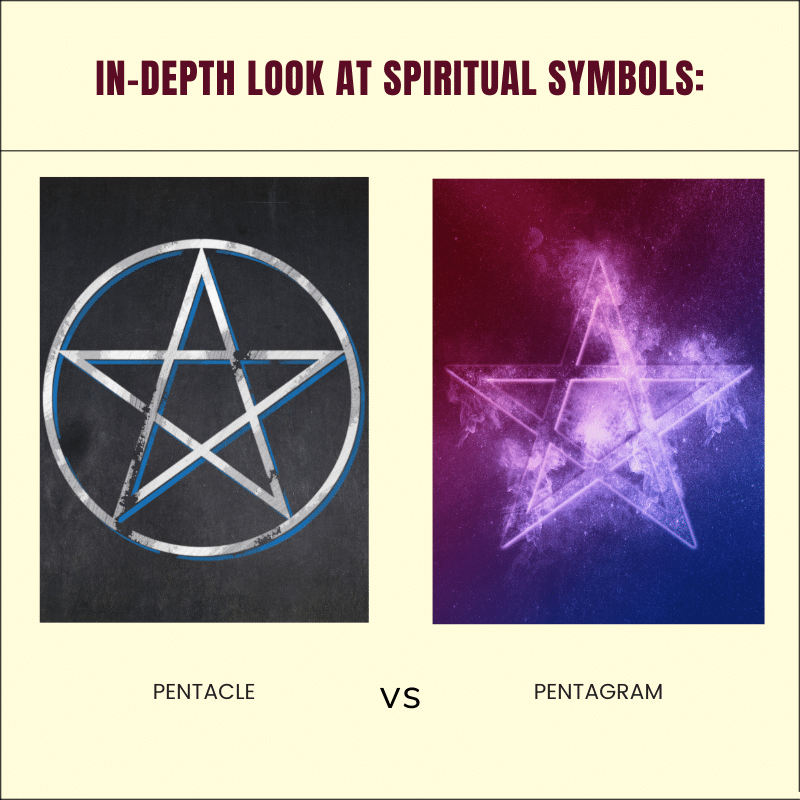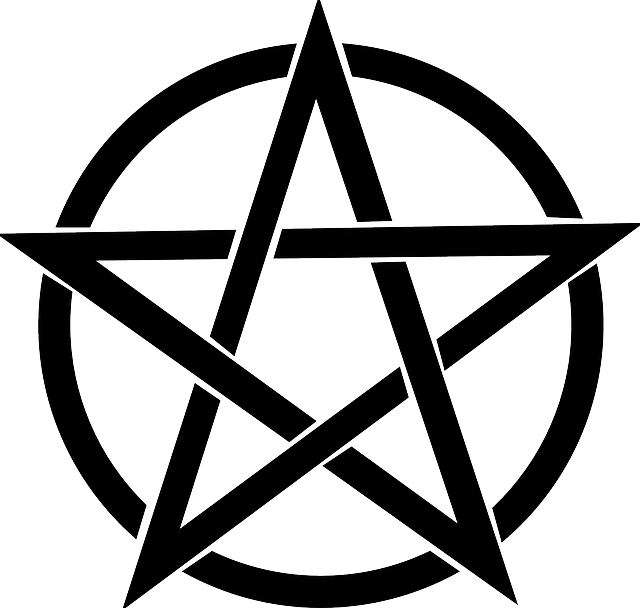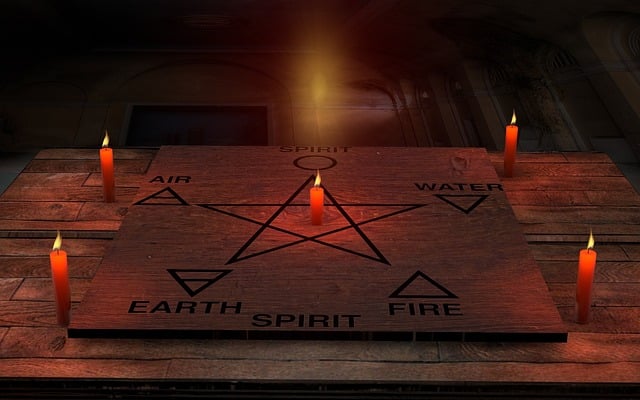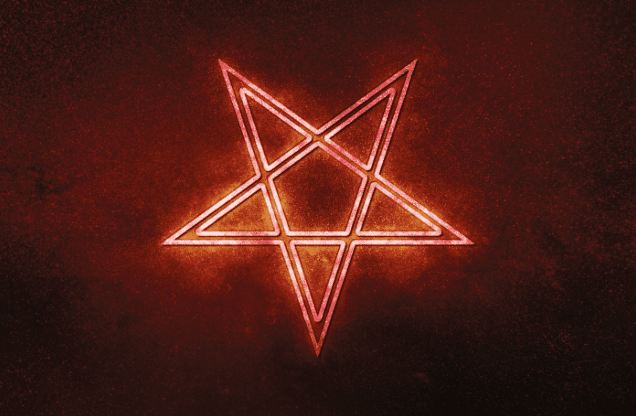
In the world of magic and spiritualism, there are a wide variety of symbols that we ascribe to. For instance, Astrology uses symbols, colors and natures for their signs that describe their personalities and character. We also look at the phases of the moon as the waxing and waning periods of spiritual energy. But what does it mean when two spiritual symbols share similar appearances? In example, looking at pentacle vs pentagram, do they mean the same thing?
Both symbols seem similar, in fact almost identical in appearance, so it’s easy to get confused between the two. Don’t worry however, dear reader, because today we’re going over all the little details of both the pentacle and the pentagram. What does a pentagram mean, and what about the pentacle? Just what exactly are their similarities and differences? We’re going over all of that in this article!
Are you here for spiritual reasons, with an interest in magic and the occult? Just curious perhaps, on the true nature of these well-known symbols? Maybe you’re just here to enjoy yourself and kill some time? Whatever your reasons, this is the article for you! So sit back, relax, and most importantly, have fun!
Below:
- What is a pentagram and what is a pentacle?
- As for pentagram symbols , what do they mean?
- Should we avoid these symbols, are they an omen of evil and dark magic?
- And many more…
Magic and Spirit: The Difference Between Pentacle and Pentagram
One might think that the visual similarities between both the pentagram symbol and the pentacle symbol mean that they are the same. But there are actually several distinct variations between the two symbols in appearance, meaning and use. The world of magic and spirits is full of similar symbols and concepts. However, the practices, contexts and concepts behind these are usually vastly different. Don’t worry, dear reader, we’re going over each difference.
For one thing, the origins and first use of the Pentacle as far as we know date back to around 1328 in France, though the word is composed of Greek components. The Pentagram on the other hand, dates farther back to ancient times, as far back as the time of Sumer. Its use is also more widespread, and indeed the pentagram is a more famous and easily-recognized symbol even today. There are several religious connotations behind the pentagram in various cultures. With such different backgrounds, it’s easy to see why the symbols held different meanings.
Pentacle vs Pentagram: what are the similarities between both symbols? What are the key differences; in their meaning, appearance and use? Is either symbol inherently good or evil in its nature? Does either symbol have a positive impact in your life, as a charm, decor or design for everyday use? Without further ado, a comprehensive look at the pentacle, the Pentagram and more, below:
Pentacle Meaning and Origins
The pentacle’s origins likely date back to as far as ancient Greece. Quite literally, the word pentacle is composed of the Greek word ‘Penta’ referring to five (such as a pentagon, a five-sided polygon) and an abbreviation of ‘circulus’ the Greco-Roman word for circle. Later on, a connection was made with the word ‘pentacol’, a medieval French word that referred to ‘talisman’. Understandably, it’s been used by a number of pagan and Wiccan cultures in spellcraft and spiritual rites. These cultures would use the pentacle as a protective charm, talisman or a token of power.

The symbol’s appearance is that of a circle enclosing within it a five-pointed star. Its symmetrical appearance has become a symbol of balance and material beauty. To construct a pentacle, you may use different materials, such as wood, stones and various metals. Individuals are even encouraged to decorate or inscribe images that hold significant meaning to them on the charm. You may heat the metals to produce a variety of colors to increase the pentacle’s beauty.
Traditional Use of the Pentacle
How was the pentacle used traditionally, over the various centuries of its existence as a magical symbol? As said above, various cultures used the pentacle as a protective charm or talisman. Usually to ward off dangers and evil spirits. Due to its protective properties, the pentacle has also been used as a cleansing tool for rituals, usually kept at altars or in the middle of a magical rite. Aside from this, the pentacle represents our connection to the material due to its symbolism that depicts balance and individual significance.
Tarot Interpretation of Pentacles
A tarot is a deck of cards used traditionally for divination and spiritual readings. The pentacle also appears in tarot cards decks. Pentacles are present within the minor arcana. This is consistent with its traditional use as an anchor to the material and a protective ward, since the minor arcana represents relatively earthly and material concepts in a tarot deck. As such, the pentacle in tarot cards has the element of Earth, representing the material, sensibility, balance and plenty.
The tarot card depiction of the pentacle expands on its symbolism to the material. Balance being central to the symbol, the tarot interpretation of it is that we must balance the spiritual and emotional with the physical. Drawing the pentacle tarot is a message not to get too caught up in spiritual pursuits that you lose track of the material. This interpretation coincides with the origin of tarot itself, considering the time it was introduced. Tarot was born in Renaissance Italy, during an economic flourish when riches and plenty were held in high esteem.
Pentagram Meaning and Origins
What is a pentagram, on the other hand, and what makes it different from the pentacle? First, let’s discuss the things that are similar between the two symbols. Both have their origins in Greek language, the Pentagram in particular holding the aforementioned ‘penta’ or five, and ‘gramma’ for letter (as in grammar). Also, both symbols contain a five-pointed star, but for a pentagram, it is necessary to draw a pentagram in one continuous line. Furthermore, it is not necessary to enclose it within a circle.
They only become more different from here on out. For one thing, the pentagram predates the pentacle for thousands of years. Its origins trace back to the early mesopotamian civilizations such as Sumer. The pentagram’s five points each represent a different element or direction, dependent on the context and ritual in which it is used. Speaking of its usage, the pentagram has had a wide variety of uses throughout its long existence, more on that below:
Traditional Use of the Pentagram

In terms of usability, pentacle vs pentagram goes a long way. The pentagram was commonly used in magical rituals more than a material symbol. It found its primary use as a tool in rites and spellcraft. Particularly for invoking or banishing powerful magics and spirits, or, similar to a pentacle, for protection. It is a popular magical symbol for the five elements (water, fire, air, earth and spirit) as well. Aside from these common uses, what was the pentagram popular for?
Well, the pentagram had widespread use throughout different cultures and times around the world. Given its ancient origins and popularity as a symbol, it’s easy to imagine that it found itself in various cultures. Particularly as a geometrical, magical and, interestingly enough, religious symbol. Its connection to various religions is probably the reason it’s still a popular and widely used symbol today. We’ll go over its popular uses over history below:
Sumer
The pentagram’s first-known use dates back to the earliest known civilization in history! Sumer was an ancient civilization in Southern Mesopotamia. They are widely known for producing the first type of writing in cuneiform. The symbol found use in this language to represent the word ‘ub’. This word was used to describe an edge, angle or corner space.
Pythagoras
Ancient Greece hardly needs an introduction as a famous civilization from antiquity. It was the Greeks who gave the pentagram its name, after all. Pythagoras was an ancient Greek philosopher who would come to influence history politically, religiously and even the world of mathematics with his ideas. He (and later, Da Vinci) used the pentagram as a symbol of man. Later Greeks also considered the pentagram a symbol of utmost perfection, representing the golden ratio of beauty.
Abrahamic Religions
Pentacle vs pentagram has strong roots here. Two abrahamic religions are famous for their use of the pentagram as a religious symbol. Judaism used the pentagram to represent the 5 books of the Torah. Namely Genesis, Exodus, Leviticus, Number and Deutoronomy. Later, Christians would refer to these books as the Old Testament. But it wasn’t particularly the Old Testament where Christianity chose to use the symbol.
In the medieval period, Christianity spread across Europe dating back to Roman influence from antiquity. Christian knights used the five points of the pentagram as a symbol for their religion. Particularly, for the five wounds that he suffered during his crucifixion. The top point represents the crown of thorns, and the other four points represent the injuries in his hands and feet. Thus for both religions, it was considered a very holy symbol.
Other Cultures
The ancient Chinese also used the symbol. In their culture it also represented the elements. To them, these were the five phases: fire, earth, metal, water and wood. Celtic tribes from antiquity used to represent Morgan, an ancient goddess. She presided over battle and death, and was known as the ‘great phantom queen’.
The Pentagram: A Symbol of Evil?
There is one more thing that the pentagram is famous (or rather, infamous for) that makes many people uncomfortable. We will discuss it, dear reader, to bring the issue to light. Inverting the pentagram has become synonymous with an anti-Christian, demonic symbol. Particularly, several satanic cults use the symbol in their rituals and cult meetings. But does this necessarily make the symbol evil?

The pentagram has been used as a symbol for protection and even as a holy symbol long before it was known for its supposedly ‘evil’ nature. Drawing a pentagram and then looking at it from the wrong side up doesn’t necessarily evoke dark magic or spirits. Ultimately, the same way the pentacle is meant to mean something special to each individual differently… a pentagram is only as evil as you invoke it. In the world of magical and spiritual pursuits, it is largely the evoker that gives something a good or evil nature. There are few, if any symbols, that are universally good or evil.
How You Can Use the Pentacle and the Pentagram
Ultimately, the debate between pentacle vs pentagram boils down to how you use it. You can keep both symbols around as charms on a necklace. Alternatively, you can decorate t-shirts or items with the symbol embroidered, engraved or printed on the item. Use both symbols as a protective ward. In particular, you can use the pentacle as a cleansing symbol to effuse good vibrations in your home or work spaces. For our more magically-enthused readers, you may keep the symbols on shrines or spiritual spaces in your private space.
The Takeaway
That was everything you need to know about pentacle vs pentagram. We hope you enjoyed this article, and that you spread good energies and vibrations. Remember the different magical properties between both symbols, and the many spiritual uses they offer. Also remember that the nature of a thing is entirely up to the one that evokes or invokes it. The power is in your hands, and not strictly only in the interpretation of others.
